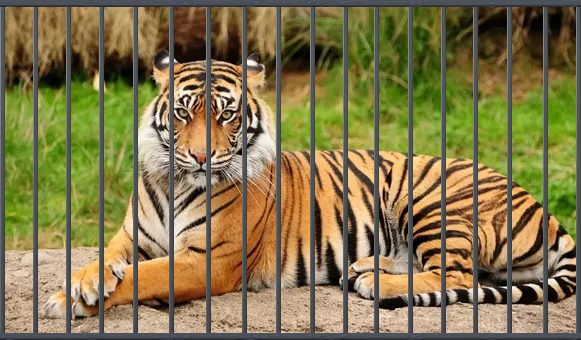Tiger At High School Prom – Cool or Cruel?

Animals should not be used as a form of entertainment!
May 18, 2018
Students attending Christopher Columbus High School’s “Welcome to the Jungle” themed prom were greeted with a surprise none of them could have predicted—a live tiger, pacing in its cage. Besides the tiger, the school also hosted a lemur, two macaws and an African fennec fox at the event, thus drawing criticism from some students, parents and animal rights groups. Days later, school principal David Pugh issued an apology on behalf of the school, saying that they “regret the decision to have had live animals at prom” and have “learned much from the experience.” However, the question remains, is it wrong to have live animals at events like prom for entertainment? Where does one draw the line between what is acceptable and what is not? Having animals in an environment such as prom should not be considered acceptable or normal. Though it surely was not the school’s intention, experts have confirmed that the ordeal caused the tiger to become distressed and agitated, and it is unfair to the animals involved for them to be put in situations like this. All in all, normalizing this behavior is dangerous because it sends a bad message to students, and may lead to additional problems down the road.
Prom at a Miami high school is a far cry from a tiger’s natural habitat in the jungles of southeast Asia. Wild animals, even those born in captivity, are not predisposed to being comfortable with the loud noises and bright lighting found in entertainment events. Ron Magill, curator for Zoo Miami, told the Miami Herald that the tiger was “obviously distressed” and that the tiger “[was] clearly looking for a way to get out of that situation.” Deliberately forcing a tiger or other animals into situations which cause them to become distressed or uncomfortable is insensitive at best, though some animal rights groups have condemned it as abusive—PETA describes the incident as a means of “funding the cruel exploitation of animals.” Though both renting out the tiger and keeping it in that cage were legal actions, the morality is questionable as they caused the animal to become distressed and uncomfortable.
Besides causing the involved animals discomfort, the decision to showcase animals at prom also sends a dangerous message to students that animals exist for human entertainment. These attitudes have long existed, prevalent in circuses which sometimes used cruel methods to train their animals for performances. In the past 20 years, animal advocacy groups have helped tighten regulations for the treatment of animals and diminish the mentality that animals serve little other purpose than entertaining human audiences. However, showcasing exotic creatures in cages seems like a step backwards in accomplishing this.
“Showing off animals at events like that is unhealthy for the animals and tells the students that it doesn’t matter if animals are comfortable as long as it adds to the fun,” freshman Nina Montero said.
Despite the outcry, there are still those who defend any school’s right to display tigers and other exotic animals at their prom. They argue that enclosed spaces, such as the one the tiger was in, is not significantly different from zoos, and zoos are not so heavily criticized.
However, there are notable differences between the conditions animals experience at a zoo versus at a cage at a high school prom. The amount of space varies greatly—the cage at the high school prom appeared to be just large enough to allow the tiger to pace back and forth while the enclosure at Zoo Miami spans several hundred feet. Additionally, zoo enclosures ensure that people keep their distance from wild animals and do not subject their inhabitants to the loud music, flashing lights and the high volume of people held at a high school prom.
The choice to host exotic animals at prom was problematic because it caused discomfort to the animals and promoted the idea that animals exist for human enjoyment. However, the blame does not fall solely on the people who hired these animals, but also on the companies that provide them and the lack of regulations against caging and displaying these creatures. Hopefully, in the future, stricter requirements for the conditions animals are kept in will be put into place, making anyone planning an event consider the effects of showcasing live animals carefully.











